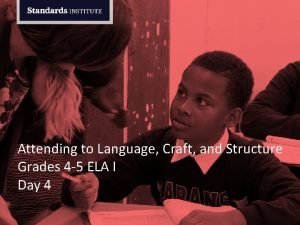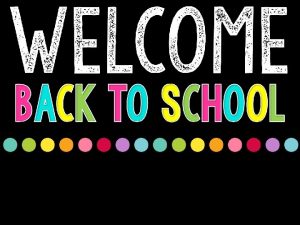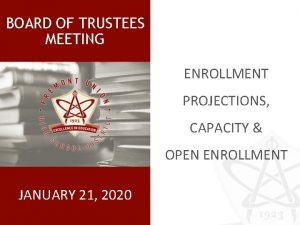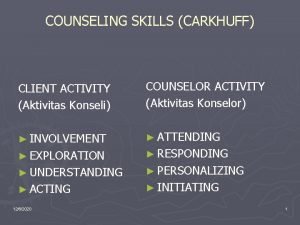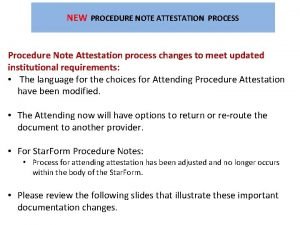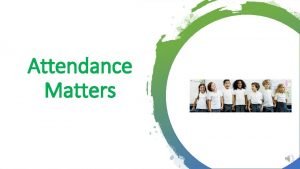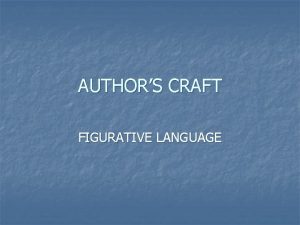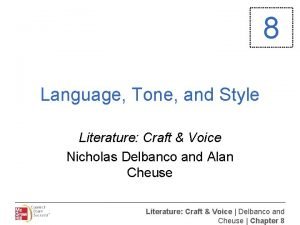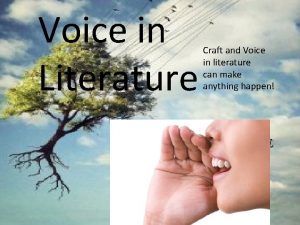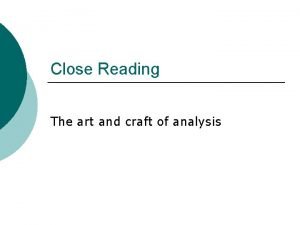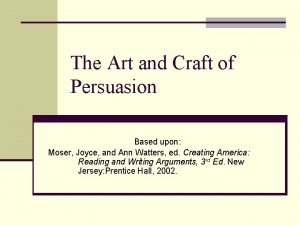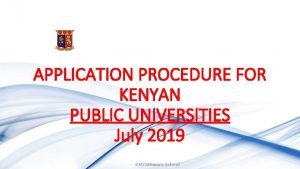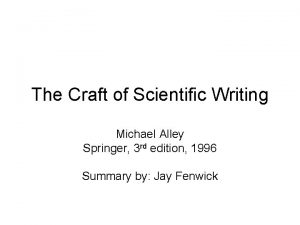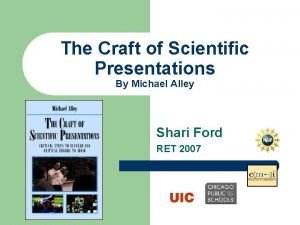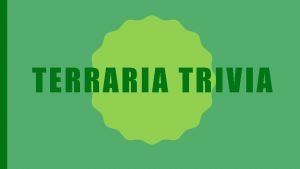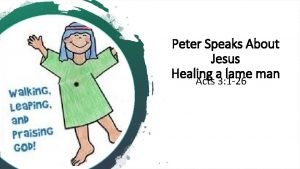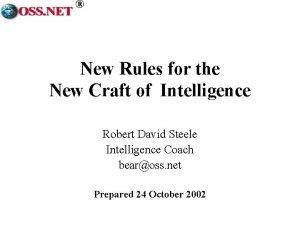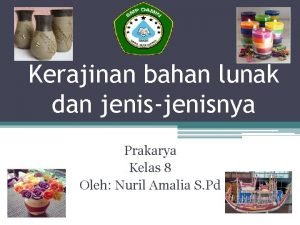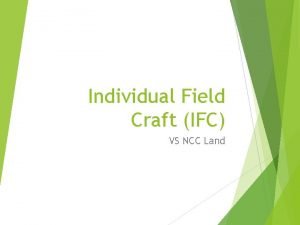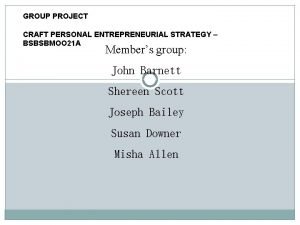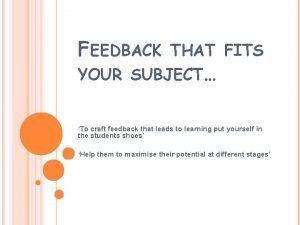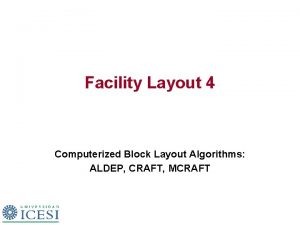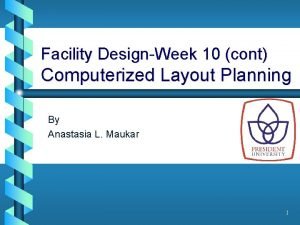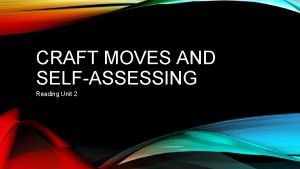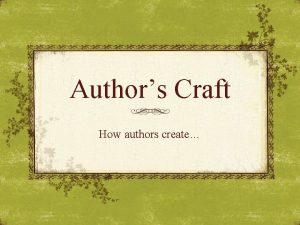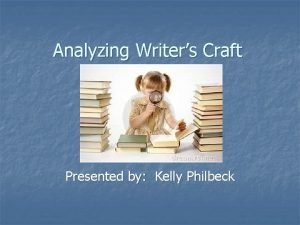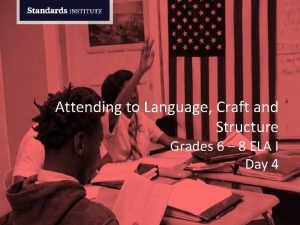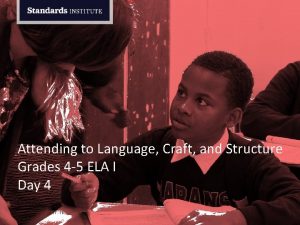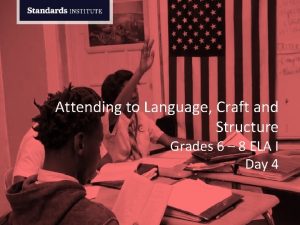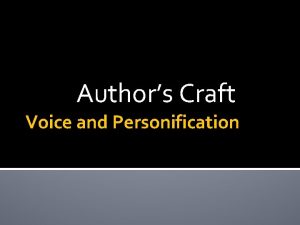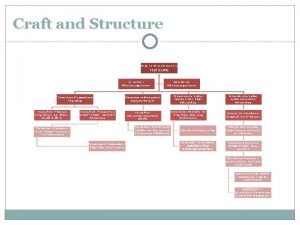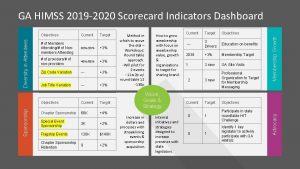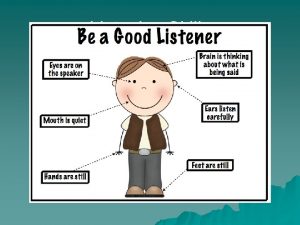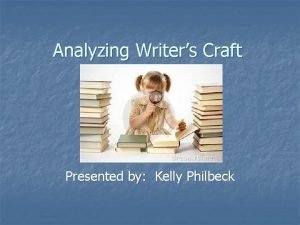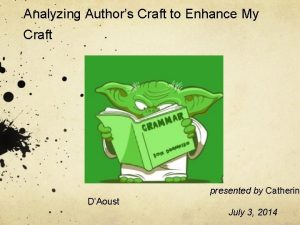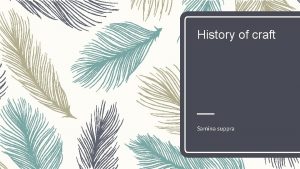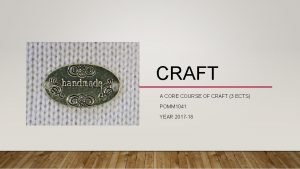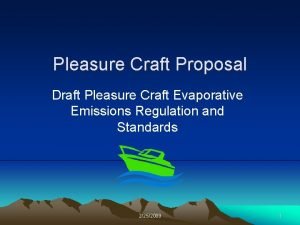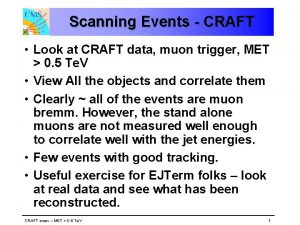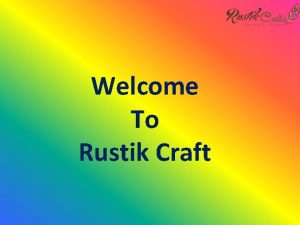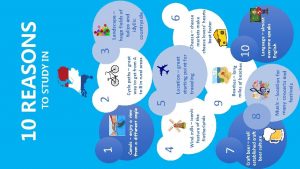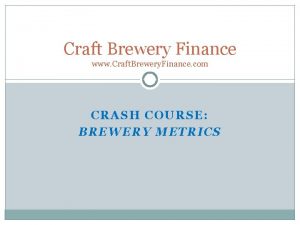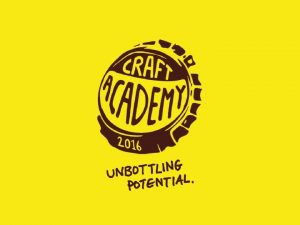Attending to Language Craft and Structure Grades 4









































- Slides: 41

Attending to Language, Craft, and Structure Grades 4 -5 ELA I Day 4

We know from experience the hard work teachers face every day as they strive to help their students meet the challenges set by higher standards. We are dedicated to empowering teachers by providing free, high-quality standards-aligned resources for the classroom, the opportunity for immersive training through our Institute, and the option of support through our website offerings. We are a team of current and former classroom teachers, curriculum writers, school leaders and education experts who have worked in the public, private and nonprofit sectors. 2

Debriefing the Keynote 1. Fill out index cards (5 minutes) Connections Contradictions Questions Ah-has 2. Get up and find a partner to share Connections (2 minutes) 3. Find a new partner. Share Connections and Contradictions making sure to integrate your last conversation into this one. Finally, collaborate on Questions (3 minutes) 4. Find another NEW partner and share Ah-has (1 minute) 5. Return to seat and prepare to share 3

Plus/Deltas and Next Steps: Highlights of Yesterday’s Feedback Plus Delta

Objectives and Agenda: Day 4 Participants will be able to • leverage the ELA Reading Craft and Structure standards to support meaning making in complex texts • conduct a structure analysis of text • before teaching it prepare a standards-based instructional sequence with a complex text I. Analyzing the Craft and Structure Standards II. Analyzing the Language Standards to support Craft and Structure III. Reading like writers IV. Lunch V. Leveraging Structure to Support Meaning Making VI. Designing instruction

Norms that Support Our Learning • Take responsibility for yourself as a learner • Honor timeframes (start, end, activity) • Be an active and hands-on learner • Use technology to enhance learning • Strive for equity of voice • Contribute to a learning environment in which it is “safe to not know” 6

Revisiting Equity • Equity is engaging in practices that meet students where they are and advances their learning by giving them what they need. It’s about fairness, not sameness. • Equity ensures that all children – regardless of circumstances – are receiving high-quality and standards-aligned instruction with access to high-quality materials and resources. • We want to ensure that standards-aligned instruction is a pathway to the equitable practices needed to close the gaps caused by systemic and systematic racism, bias, and poverty. • All week, we will explore our learning through an equity lens, and we will capture those moments visibly here in our room. 7

Equity, Language, and Learners 1) Students need well-structured opportunities to practice language to learn it. Amplify, do not simplify, language. 2) Content and language develop inseparably and in integrated ways; language development occurs over time and in a nonlinear manner. 3) Scaffold students toward independence with complex tasks; do not scaffold by simplifying text language and task complexity. 4) We are the gatekeepers of language in the classroom as teachers and leaders. 5) Acquiring the language for the masterful use of standard English in writing and speaking benefits all students. 6) All students bring valuable knowledge and culture to the classroom. 8

One Bite at a Time: Craft and Structure 9

Progression of Learning: R. 4 Gr Reading for Literature Reading for Information 4 Determine the meaning of words and phrases as they are used in a text, including those that allude to significant characters found in mythology (e. g. , Herculean). Determine the meaning of general academic and domain-specific words or phrases in a text relevant to a Grade 4 topic or subject area. 5 Determine the meaning of words and phrases as they are used in a text, including figurative language such as metaphors and similes. Determine the meaning of general academic and domain-specific words and phrases in a text relevant to a Grade 5 topic or subject area 6 Determine the meaning of words and phrases as they are used in a text, including figurative and connotative meanings; analyze the impact of a specific word choice on meaning and tone Determine the meaning of words and phrases as they are used in a text, including figurative, connotative, and technical meanings. 9

The Language Standards • Grade 5 Language Standard 5: Demonstrate understanding of figurative language, word relationships, and nuances in word meanings. • Grade 5 Reading Standard 5 (Literature): Determine the meaning of words and phrases as they are used in a text, including figurative language such as metaphors and similes • Grade 5 Reading Standard 5 (Informational): Determine the meaning of general academic and domain-specific words and phrases in a text relevant to a Grade 5 topic or subject area 10

Precise and Specific In your notebook: • Read the texts and answer the questions, thinking about WHAT these questions are generally about (Vocabulary in context? Structure? Point of view or purpose? ) • Code each question with a specific grade-level Standard (4 -6), thinking about what specific characteristics make that question that standard and that grade level. GRADE 5, Standard 5. Because it’s asking about how a section of text fits into the whole (vs. the differences between types of texts) IF YOUR STATE HAS A DIFFERENT APP… 12

Answer Key First Question Second Question Third Question “The Story of Chocolate” Grade 4, RI. 4. 5 N/A “Yasmeen’s Turn” Grade 5, RL. 5. 4 Grade 5, RL. 5. 5 Grade 5, RL. 5. 6 Excerpt from Swimming with Sharks Grade 4, RL. 4. 5 Grade 4, RL. 4. 4 Grade 4, RL. 4. 5 13

Inside the Reading Brain, Part 2 In your notebook: What are the lessons? 14

What Kinds of Test Preparation Will Enhance Education? (Still True Today) What can calm the frantic and ineffectual test preparation that has overtaken many schools as they labor to meet NCLB's adequate yearly progress requirement? Students and teachers cannot directly prepare for a reading test. . . But if you cannot predict the subject matter on a valid reading test, how can you prepare students for it? You can't, and, therefore, you shouldn't try. The only useful way to prepare for a reading test is indirectly—by becoming a good reader of a broad range of texts, an ability that requires broad general knowledge. ED Hirsch Month Year– Session # 15

How Do Writers Create Structure? 15

Say Something 1. Partner up. 2. Mark every other question in your reading, “How Rebecca Skloot Wrote the Immortal Life of Henrietta Lacks. ” 3. These will be your “Say Something” markers. 4. Read to the first “Say Something” marker, then discuss what you have read so far with your partner. You might ask a question, provide a brief summary, or discuss a key point, an interesting idea, or a connection to your teaching or students. 5. Continue the process until you’ve read the whole article. 16

Morning Take-Aways 18

LUNCH 17

Post Lunch Brain-Crunch: Alberta The next unit that my district requires us to teach is focused on colonial times in what is now the United States. It’s a great unit, but a lot of information about Native Americans and enslaved Africans is missing, and the triangle slave trade is referred to as “forced migration. ” Can you recommend additional resources or avenues to pursue to ensure my students have access to the 360 view of colonial times?

Response to Alberta Several issues here. First, regardless of the demographics of your class, it’s important that students are aware that there is more than one narrative about colonial times. Second, Slavery was not forced migration: it cannot be migration if it’s kidnapping and human trafficking. Let’s clear that up with ourselves and our students. To identify where on the historical timeline we are talking about, and to acknowledge the existence of more than one story of colonial times, I would recommend incorporating a timeline of events, beginning with a general understanding that First Nations have been there for more than 10, 000 years, when slavery began, and what it was like to not be white during this time period in different regions. Consider grouping students to read brief accounts or sets of texts focused on the lives of people who were not white during this time…

Objectives and Agenda: Day 4 Participants will be able to I. • leverage the ELA Reading Craft and Structure standards to support meaning making in complex texts II. Analyzing the Language Standards to support Craft and Structure • conduct a structure analysis of text before teaching it • prepare a standards-based instructional sequence with a complex text Analyzing the Craft and Structure Standards III. Reading like writers IV. Lunch V. Leveraging Structure to Support Meaning Making VI. Designing instruction

Let’s Play More With This Idea Please locate and pull out three texts we briefly worked with yesterday: • “Vote or Die” • “Despite the tremendous risk, African American women marched for suffrage, too ” • “Elizabeth Cady Stanton and Susan B. Anthony” You have extra copies of these three texts in the table envelope. 19

Grade 4 Structure Standard (RI. 4. 5) Describe the structures (e. g. , chronology, comparison, cause/effect, problem/solution) of events, ideas, concepts, or information in a text or part of a text. 22

Expert Groups: Text Structure Select one of the three texts on which you would like to focus and join three other participants to form an Examination Group. Part 1: First Read of Text • Read through the text carefully. – What are the structures? – Be sure to discuss and explain how you know the text’s structures – How could structure be used as a scaffold to understanding the text? Part 2: Deconstructing Structure • Using the blank paper, create a graphic organizer that both organizes and reflects the text’s structures, and that students could use to better access the text • Add in the text’s details to your organizer to check your thinking. 23

Home Group Sharing: Text Structure Rejoin your Home Group to share your expertise! • First, invite your Home Group to skim the text • Next, share the type of text structure you focus on along with the map or organizer you came up with. • Field questions 25

The Nuance of Structure & Deeper Learning Reflection How does studying the text structure help you gain a deeper understanding of the text? How might addressing the craft and structure standards scaffold students toward independence with complex texts and/or tasks? How could a misunderstanding of the craft and structure standards do the opposite: simplifying language and task complexity? 26

What are you learning? Grade 4 Grade 5 RL. 5 Describe the overall structure (e. g. , chronology, comparison, cause/effect, problem/solution) of events, ideas, concepts, or information in a text or part of a text. Compare and contrast the overall structure (e. g. , chronology, comparison, cause/effect, problem/solution) of events, ideas, concepts, or information in two or more texts. 27

Reminder: The Abuse of Structure • DO NOT select texts for specific structures. Structure is a fluid concept. • DO use teachable moments where structure becomes clear in text to demonstrate how it works, and teach students to identify it as they read. • DO embed instruction on structure within a larger context and conversation. 30

Reading Like a Writer When reading like a reader, you’re thinking about WHAT the text says. When reading like a writer, you’re analyzing HOW the author is making the text say what it does (explicitly and implicitly). 31

Planning Lessons Starts with Texts Features of texts that help students tackle Standards 4 -6: • Lots of opportunity to encounter and grapple with new academic vocabulary • Interesting and different text structure(s) • Compelling points of view/purposes 32

Look Back Go back to the envelope of texts we sorted into sets yesterday. Which would be the basis for good craft and structure lessons? Choose one or two texts that you’ll write a lesson/instructional sequence for this afternoon: • Lots of opportunity to encounter and grapple with new academic vocabulary • Interesting and different text structure(s) • Compelling points of view/purposes Alternative: Consider texts from your existing curriculum or that you’re planning to use in the future. Which of those might be good for craft and structure lessons? 33

Lessons as Models: Diving in for Process and Strategy Choose a craft and structure lesson from www. unbounded. org Grade 4, Module 3 B, “Considering Perspectives and Supporting Opinions: Perspectives on the American Revolution. ” Grade 5, Module 1, “Becoming a Close Reader and Writing to Learn: Stories of Human Rights” 37

BREAK 38

Carousel Brainstorm Strong. . . Vocabulary Idea Frayer Model Source Grade 7, Module 4 Lesson 1 39

Lesson Planning The goal for the next 45 minutes is to begin development of a lesson plan or instructional sequence that: • centers on the text you selected earlier. • focuses on RI. 4, 5, and/or 6 • Incorporates text-dependent questions that support analysis of text. • Incorporates at least one of the instructional techniques you’ve experienced • Aligns to the Principles for Equity, Language, and Learners • Is rigorous, engaging, and scaffolded • Requires kids to do the work. 40

Day 4: Did we meet the objectives? Are we better prepared to: • leverage the ELA Reading Craft and Structure standards to support meaning making in complex texts? • • conduct a structure analysis of text before we teach it? • help students read like writers? develop standards-based instructional sequences with complex text?

Feedback Please fill out the survey located here: www. standardsinstitutes. org • Click “Winter 2018” on the top of the page. • Click “Details” on the center of the page. 42

What’s Coming Together? What is coming together for you? On a 3 x 5 card, answer the first question on one side, and the second on the other. Please answer in full sentences to avoid confusion. What remains unanswered? 41

Image credits • • Slide 1: Needs image credit Slide 2: Orlando Waldorf Slide 15: Need image credit Slide 42: : http: //www. standardsinstitutes. org/institute/summer-2017#verticalpanel--101 43

References Slide Source 10 Engage. NY, Released Items 2016. https: //www. engageny. org/resource/released-2016 -3 -8 -ela-and-mathematicsstate-test-questions 16 Image Credit: http: //www. amazon. com/Rebecca-Skloot/e/B 002 LUV 0 FG 16 “How Rebecca Skloot Built the Immortal Life of Henrietta Lacks. ” Used with permission. http: //www. theopennotebook. com/2011/11/22/rebecca-skloot-henrietta-lacks/ 19 New York Times article Engage. NY. https: //www. engageny. org/resource/grade-4 -ela-module-4 “Susan B. Anthony: Champion of Women’s Rights” Excerpted from: http: //www. historyswomen. com/socialreformer/susanb. html “Elizabeth Cady Stanton and Susan B. Anthony” http: //www. americaslibrary. gov/aa/stanton/aa_stanton_friends_1. html 22 Lessons from Grade 4, Module 4, ELA Curriculum on Engage. NY. https: //www. engageny. org/resource/grade-4 -elamodule-4 44
 Language craft and structure
Language craft and structure Thank you for attending open house
Thank you for attending open house Attending vs resident
Attending vs resident Attending responding personalizing initiating
Attending responding personalizing initiating Erf requirements for teacher 1 to teacher 3
Erf requirements for teacher 1 to teacher 3 Aper attestation
Aper attestation Georgetta holloway
Georgetta holloway Author's craft figurative language
Author's craft figurative language Literature craft and voice
Literature craft and voice Literature craft and voice
Literature craft and voice Annoying create and craft presenters
Annoying create and craft presenters Gaya desain art and craft
Gaya desain art and craft Analyze the
Analyze the The art and craft of persuasion
The art and craft of persuasion Thangka painting of arunachal pradesh
Thangka painting of arunachal pradesh Kcse grades and points
Kcse grades and points Metamorphic
Metamorphic City and guilds walled garden
City and guilds walled garden Chinese knot tutorial
Chinese knot tutorial Craft distilling expo
Craft distilling expo The craft of scientific writing
The craft of scientific writing The craft of scientific presentations
The craft of scientific presentations Terraria hardy saddle
Terraria hardy saddle Storage craft resellers
Storage craft resellers Rokodelstvo art & craft slovenija
Rokodelstvo art & craft slovenija Playcraft playgrounds
Playcraft playgrounds Peter heals the lame man craft
Peter heals the lame man craft Robert david steele the new craft of intelligence
Robert david steele the new craft of intelligence Lost at sea coast guard ranking
Lost at sea coast guard ranking Bahan kerajinan yang berasal dari adonan tepung adalah
Bahan kerajinan yang berasal dari adonan tepung adalah Methods of judging distance in ncc
Methods of judging distance in ncc Personal entrepreneurship strategy
Personal entrepreneurship strategy Craft feedback
Craft feedback Craft layout example
Craft layout example Computerized layout planning
Computerized layout planning Craft production system
Craft production system Craft moves
Craft moves What is a craft
What is a craft Space craft escape
Space craft escape Craft knife definition
Craft knife definition What is authors craft
What is authors craft Writers craft examples
Writers craft examples
